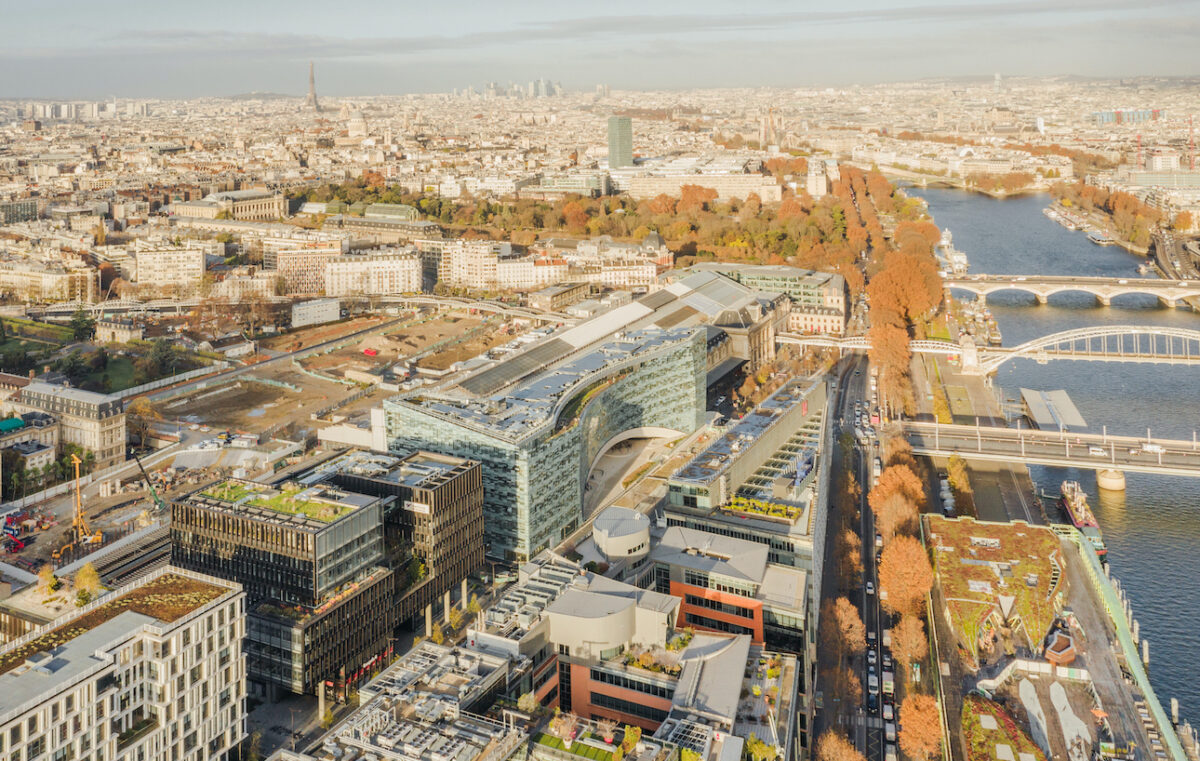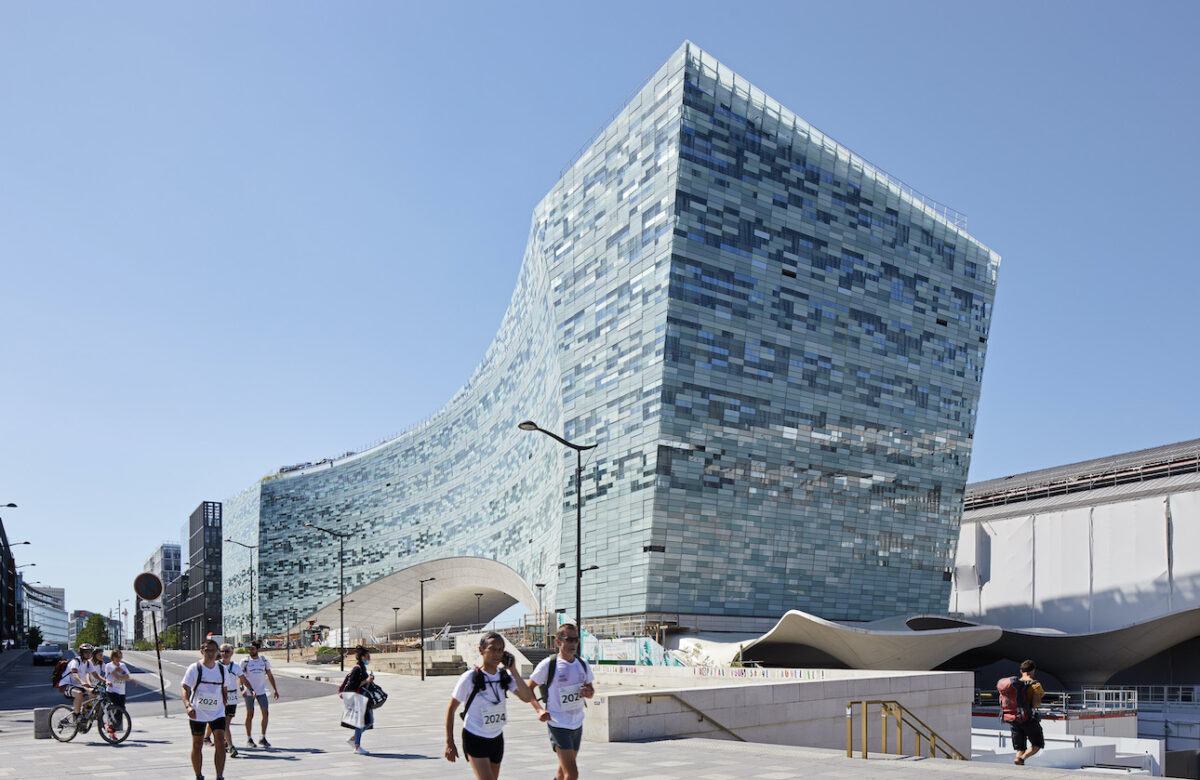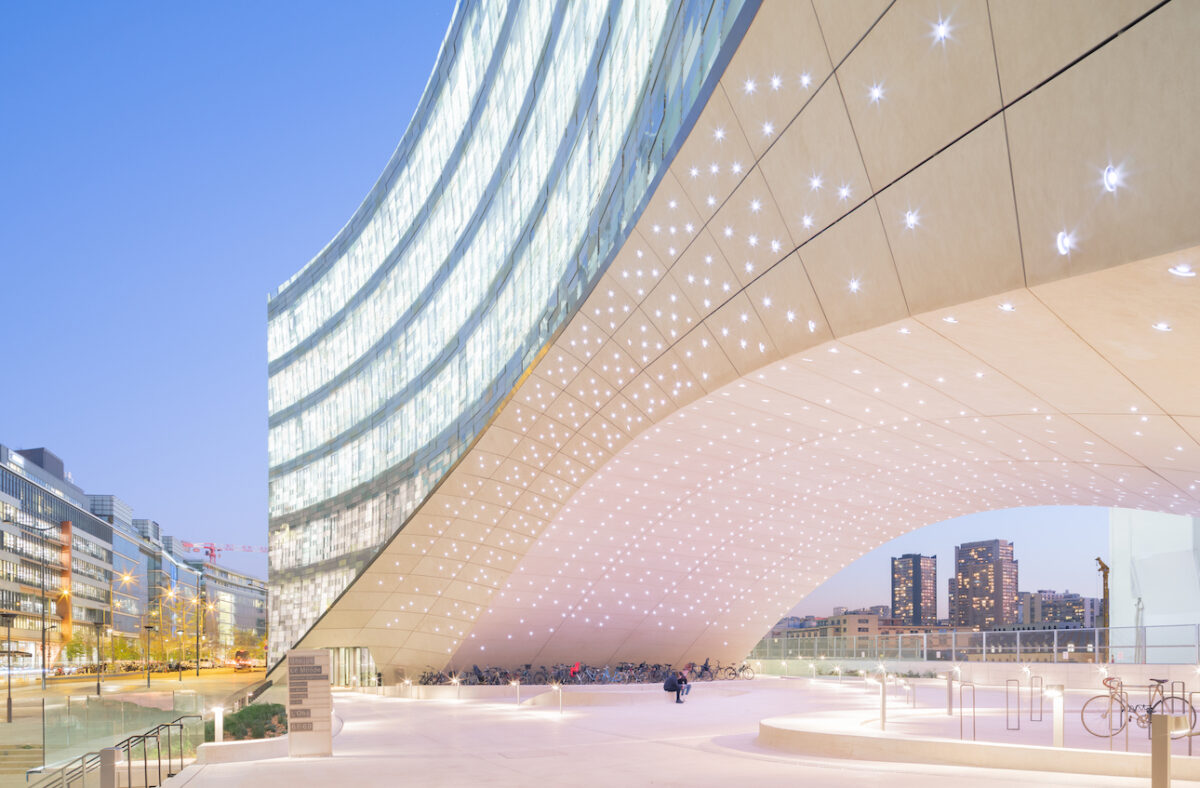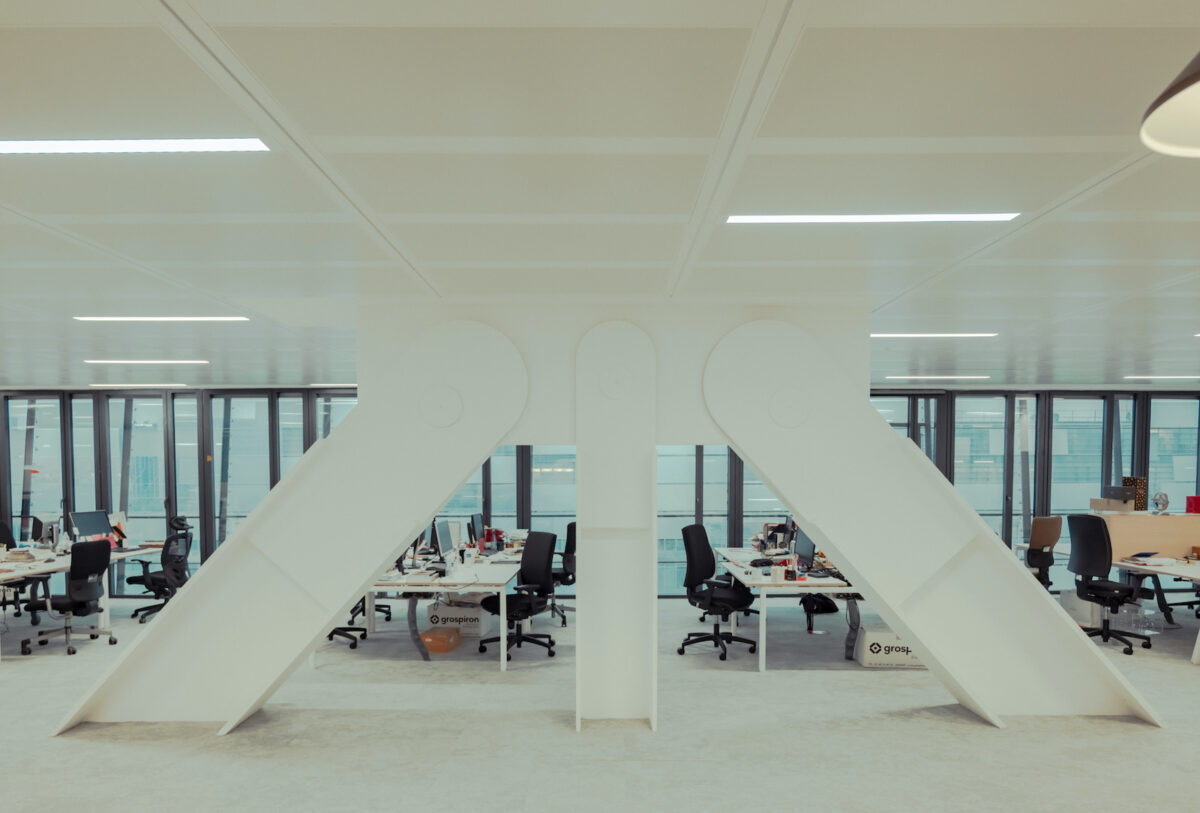The large-scale, glass-clad office building had its fair share of challenges before coming to fruition – but aims to make a statement
Words by Francesca Perry
In a time when media organisations are shrinking, and offices are sitting ghostly empty as the pandemic catalyses a shift to working from home, it is perhaps jarring to see the launch of a large office building for a newspaper. But buildings which are completing now were of course conceived of long before the spectre of Covid-19.
It is with determined and resilient optimism that the new Snøhetta-designed headquarters for Le Monde Group (LMG) in Paris officially launched this December. The large-scale, glass-clad building houses the 1,600 employees of the company, owner of renowned French daily newspaper Le Monde.
Located in the evolving 13th arrondisement – home to railway terminus Gare d’Austerlitz, new startup hub Station F and a University of Paris campus – the 22,933 sq m building marks a break with traditional Parisian architecture whilst subtly referencing aspects of the city.
‘We wanted this building to become an integral part of the future French culture,’ says Snøhetta founding partner Kjetil Trædal Thorsen, at the online press conference on 16 December. ‘We ended up with a very unusual everyday building.’

The 80m-long building is immediately notable for its glass skin, composed of more than 20,000 glass panels with varying levels of opacity to create a pixellated pattern that is meant to reference the printed letters of newspapers and magazines.
The street facade is defined by a concave arc, echoed by another concavity seemingly carved into the structure’s base, which creates a concrete vaulted space allowing pedestrians to pass underneath the building. This public realm connects to a surrounding concrete plaza, complete with seating and bike parking, making clear the public-facing intention of the project.
The architecture has adapted to the particular conditions of the site, including the location just above the railway lines and platforms of Gare d’Austerlitz. The site could only carry a specific amount of weight, and only on its two extremities, leading to the creation of a bridging structure of steel and the vaulted arch space at the base. This bridge-like engineering approach was also intended by Snøhetta and local architect SRA to reference the city’s iconic bridges spanning the River Seine.
On the top level of the building, a terrace provides outdoor space for employees, while at the building’s base, public retail and food functions are located strategically next to the train station.

Le Monde Group owned its own headquarters long ago, but lost it in the mid-1980s after the company ran into financial trouble. As CEO Louis Dreyfus explains at the online launch, now that the company is in better stead, it was important to own their own building again – and bring together employees across all LMG publications under one roof. In 2015, LMG commissioned Snøhetta to deliver the design following an international competition.
‘We asked Snøhetta for an emblematic and comfortable building,’ says Dreyfus. ‘We wanted to make an ambitious aesthetic choice. We wanted it to be a landmark in the city of Paris.’ Thorsen adds: ‘The building starts becoming a symbol for how Le Monde is represented in Paris.’
How this symbolic representation is played out in the architecture is perhaps fairly subtle: the glass facade represents the newspaper’s core value of transparency; the arch letting the public flow underneath the building demonstrates the company’s vision to engage with the public.

Archimage, the Paris-based practice responsible for the interiors, had the task of delivering a design that was both symbolically and practically aligned with the company’s approach.
As director Vincent Dubois explains, the design was intended to help people communicate. There is very clear circulation as well as distinct and visible zones for different teams across the company emphasised by spatial layout. Dreyfus makes clear a sense of luminosity and comfort were both vital in the interior design approach.
The project had its fair share of challenges – ‘challenges’ was perhaps the word most used throughout the press conference – including its location above railway lines, stringent central Paris planning restrictions and completing amid a pandemic.

Not to mention a backdrop of ever-present security threats in the French capital since the 2015 Charlie Hebdo shooting and terrorist attacks later that year. To create a building that does not speak of defensive architecture, then, must have been quite the coup. Referencing the requirement to balance openness and security, Thorsen notes: ‘Pierre Bergé [the late LMG co-owner] wanted an open and accessible media house – and that blended directly into what we wanted for this building… [It] is primarily about opening up in a time where fear and uncertainty pushes our societies to increase barriers and strengthen security enforcement.’
Things got a little dicier towards the end of the online press conference, however. Faces turned red and speech became stilted as questions were posed about sustainability (seemingly not one of the project’s strongest points, what with it being all steel, concrete and glass – save some rooftop solar panels), suitability for its historic Parisian context (‘It’s a new district,’ countered the developer) and resemblance to ALA Architects’ recent Oodi Library in Helsinki (‘We draw inspiration from ourselves!’ protested Thorsen). At one point, a disgruntled Le Monde employee even complained that he didn’t really like working in the building.
The proof will be in the pudding – the lived experience both around, beneath and within the building. But two things are for certain. First, Le Monde Group is not short on confidence, and perhaps that’s what we need from newspapers in an age when decent journalism is so jeopardised. Secondly: online launches of buildings, while frustrating in terms of not being able to encounter the project in person, certainly allow a greater plurality of voices to challenge and unpack the design and its impact. Welcome, I suppose, to the future of journalism.

















